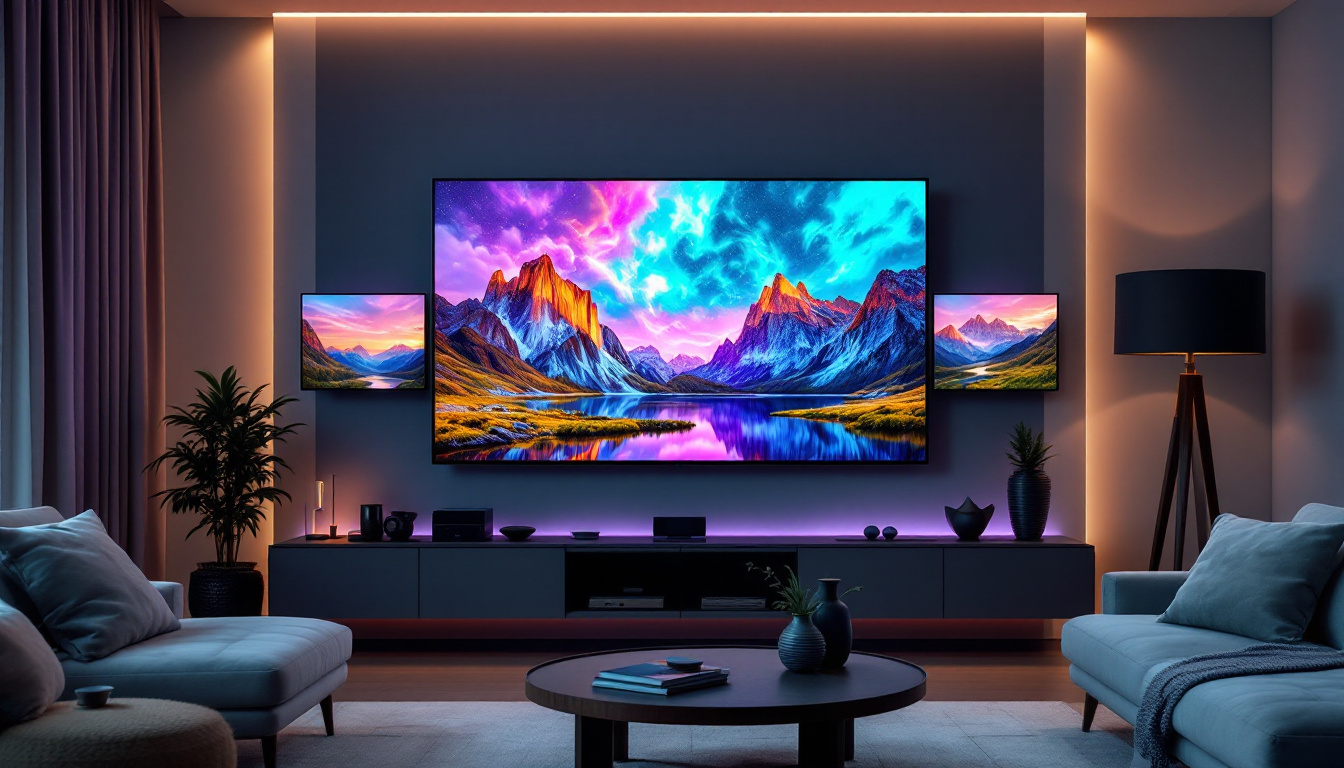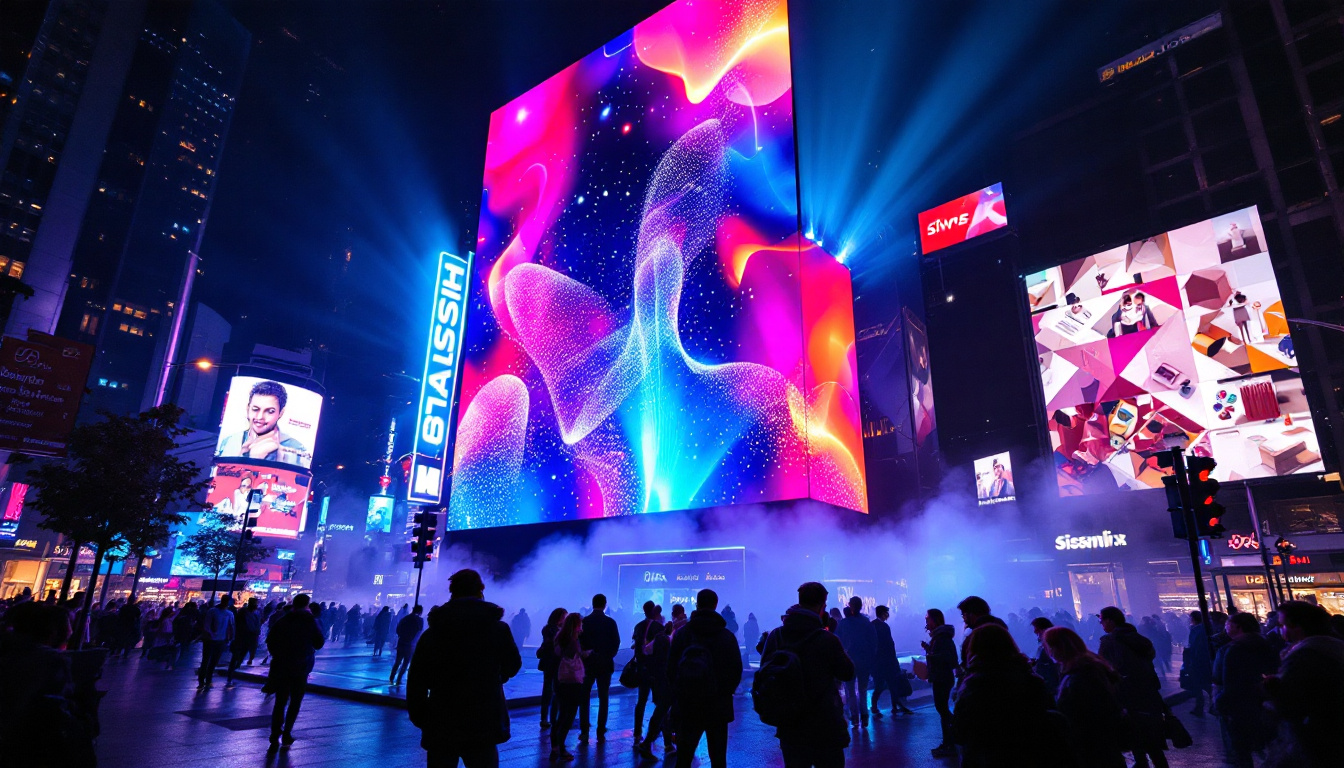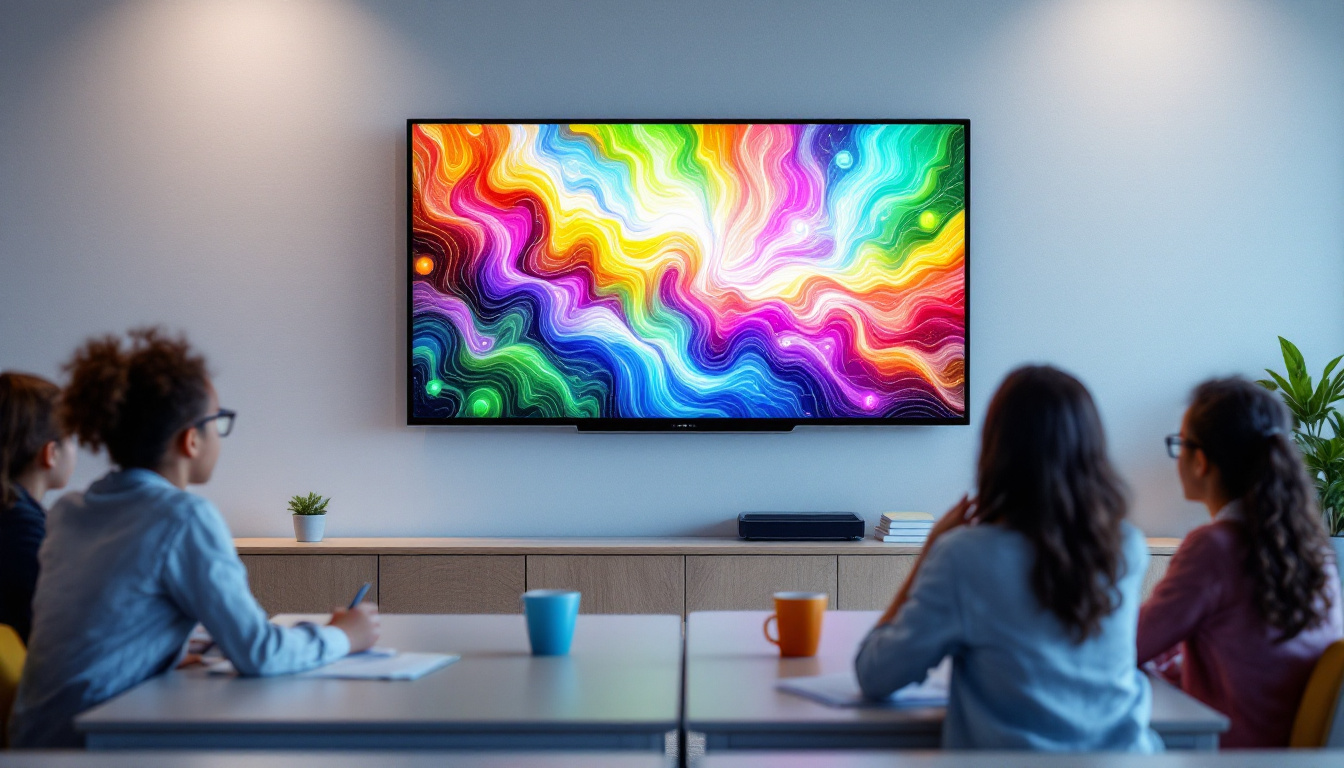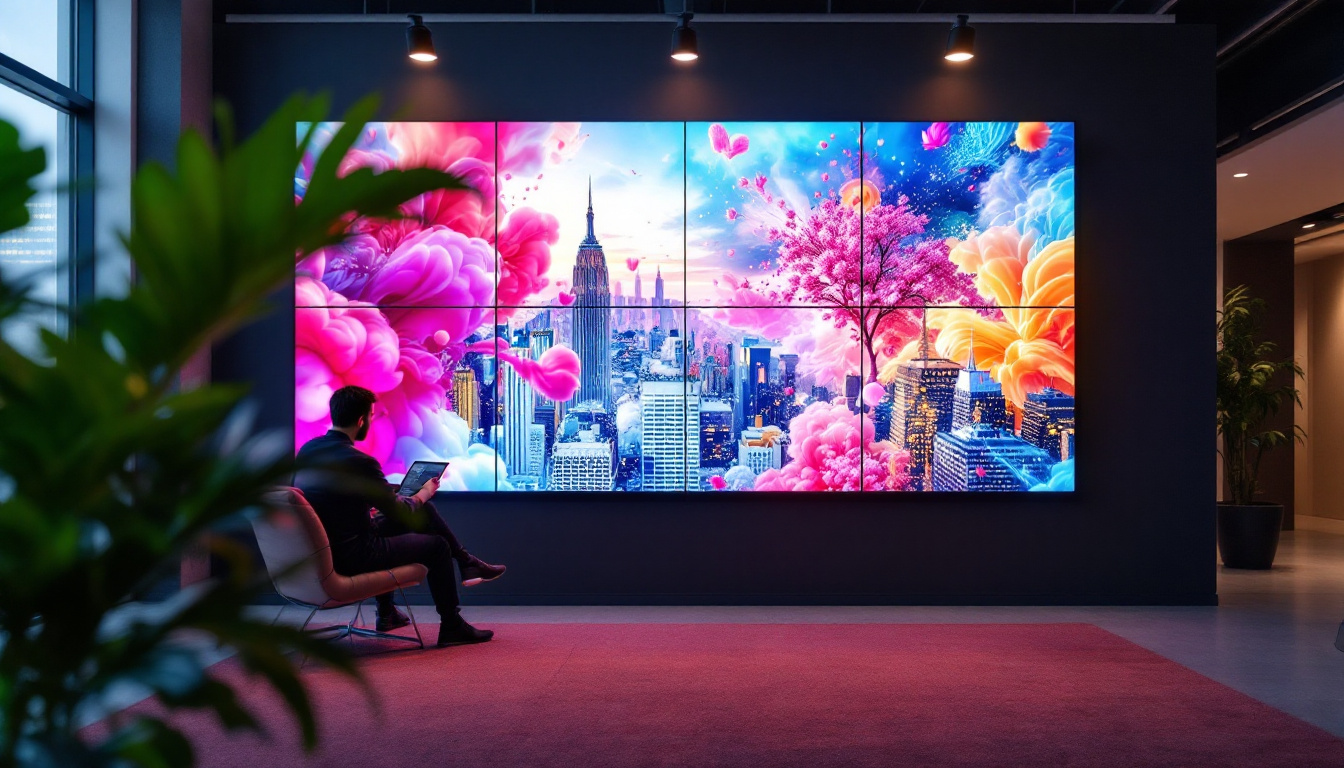In recent years, churches have increasingly embraced technology to enhance their worship experience. One significant innovation that has transformed how congregations engage with their environment is the use of LED displays. These vibrant, dynamic screens have become a staple in many places of worship, offering a range of benefits that go beyond mere aesthetics. This article delves into the concept of church LED walls, exploring their features, advantages, and considerations for implementation.
Understanding LED Technology
LED, or Light Emitting Diode, technology has revolutionized the display industry. Unlike traditional projectors or screens, LED displays consist of numerous small diodes that emit light when an electric current passes through them. This technology allows for brighter, more vivid images and videos, making it ideal for large gatherings where visibility is crucial. The efficiency of LED technology also contributes to its popularity; these displays consume significantly less power compared to older technologies, leading to lower energy costs and a reduced environmental footprint.
The Basics of LED Displays
At its core, an LED display is made up of individual pixels, each of which can change color and brightness. This pixel-based structure enables the creation of detailed images and animations. The resolution of an LED wall is determined by the pixel pitch, which is the distance between the centers of two adjacent pixels. A smaller pixel pitch results in higher resolution and clarity, making it suitable for close viewing. Furthermore, advancements in LED technology have led to the development of fine-pitch displays, which provide exceptional detail even at close distances, making them ideal for settings like conference rooms and high-end retail environments.
LED displays can be categorized into two main types: indoor and outdoor. Indoor LED walls are typically designed for environments with controlled lighting, while outdoor displays are built to withstand various weather conditions and offer higher brightness levels to combat sunlight. Outdoor LED displays often incorporate protective features such as waterproofing and UV resistance, ensuring durability and longevity in harsh conditions. This resilience is particularly important for events held in open-air venues or for advertising purposes in bustling urban areas.
Types of LED Walls Used in Churches
Churches can choose from several types of LED walls, each suited for different applications and settings. Fixed installations are the most common, providing a permanent display solution for worship services, announcements, and events. These installations can be customized in size and shape to fit the specific architectural features of the church, enhancing the overall aesthetic and functionality of the space. Portable LED walls are also available, offering flexibility for multi-site congregations or outdoor events. This versatility allows churches to easily adapt their visual presentation to different venues, ensuring that their message reaches congregants no matter the location.
Additionally, churches may opt for creative LED solutions, such as curved or transparent displays, which can enhance the visual experience and create a unique atmosphere during services. Curved displays can wrap around stages or alter the traditional flat viewing experience, drawing the congregation’s attention and immersing them in the worship environment. Transparent LED screens, on the other hand, allow for innovative designs that maintain visibility of the church’s architecture while still delivering impactful visuals, making them a popular choice for modern worship spaces that blend tradition with contemporary technology.
The Benefits of LED Displays in Worship Settings
Implementing LED displays in churches offers numerous advantages that can significantly enhance the worship experience. From improved visibility to increased engagement, these benefits make LED technology an appealing choice for many congregations.
Enhanced Visual Communication
One of the primary benefits of LED displays is their ability to convey messages clearly and effectively. Whether displaying song lyrics, sermon notes, or announcements, LED walls ensure that everyone in the congregation can see and engage with the content. This is particularly important in larger churches where traditional projection methods may fall short.
Moreover, the vibrant colors and high contrast of LED displays create a visually appealing environment. This can help capture the attention of the congregation and foster a more immersive worship experience. The dynamic nature of LED technology allows for animations and transitions that can enhance storytelling during sermons, making biblical narratives come alive in a way that static images simply cannot.
Flexibility and Versatility
LED displays are incredibly versatile, allowing churches to customize their content according to different events and themes. From holiday services to community outreach programs, the ability to change visuals quickly and easily enables churches to maintain relevance and keep their messaging fresh.
Additionally, LED walls can be used for various purposes beyond worship services. They can serve as platforms for live streaming, broadcasting events, or even displaying social media feeds, further engaging the congregation. This interactivity can create a sense of community, as members can see their contributions and experiences reflected in real-time, fostering a more connected atmosphere.
Cost-Effectiveness Over Time
While the initial investment in LED technology may be significant, the long-term cost savings can be substantial. LED displays are energy-efficient, consuming less power than traditional lighting and projection systems. Their durability also means lower maintenance costs, as they have a longer lifespan and require less frequent replacements.
Furthermore, the ability to create high-quality content in-house can reduce the need for external production services, leading to additional savings for the church. This self-sufficiency not only cuts costs but also empowers church staff and volunteers to develop their skills in digital media, enhancing the overall creative capacity of the congregation. As churches embrace technology, they can also explore innovative ways to engage their community, such as hosting workshops or training sessions that teach members how to effectively use these displays for outreach and ministry purposes.
Considerations for Implementing LED Walls
Despite the many advantages of LED displays, there are several factors that churches should consider before making a purchase. Understanding these considerations can help ensure a successful implementation that meets the needs of the congregation.
Budget and Financial Planning
Before investing in an LED wall, it is essential for churches to establish a clear budget. This should include not only the cost of the display itself but also installation, maintenance, and potential upgrades. Many churches may find it beneficial to explore financing options or fundraising initiatives to help cover the initial costs.
Additionally, churches should consider the long-term financial implications of their investment. Evaluating energy consumption, maintenance costs, and potential revenue from events can provide a clearer picture of the overall financial impact.
Space and Installation Requirements
The physical space available for an LED wall will significantly influence the type and size of the display chosen. Churches should assess their sanctuary or auditorium layout to determine the optimal location for the LED wall, ensuring that it is visible from all seating areas.
Installation requirements also vary depending on the type of LED display. Fixed installations may require structural support, while portable walls need to be easily assembled and disassembled. Consulting with professionals who specialize in audio-visual installations can help churches navigate these logistical challenges.
Content Creation and Management
Creating engaging content for an LED wall is crucial for maximizing its impact. Churches should consider whether they have the resources and expertise to produce high-quality visuals in-house or if they need to outsource this task to professionals.
Moreover, a content management system (CMS) can streamline the process of updating and scheduling content. This allows for efficient communication of messages, ensuring that the congregation receives timely information and engaging visuals during services.
Best Practices for Using LED Displays in Worship
To fully leverage the potential of LED displays, churches should adopt best practices that enhance their effectiveness and foster a positive worship environment.
Designing Engaging Visual Content
When creating content for an LED wall, it is essential to prioritize clarity and simplicity. Text should be legible from a distance, and visuals should complement the message rather than distract from it. Using high-quality images and videos can significantly enhance the overall aesthetic and engagement level.
Incorporating a variety of content types, such as animations, transitions, and live feeds, can also keep the congregation engaged. Regularly updating content to reflect seasonal themes or special events can further enhance the worship experience.
Training Staff and Volunteers
To ensure the successful operation of an LED display, churches should invest in training for staff and volunteers. Understanding how to operate the technology, troubleshoot common issues, and create content is essential for seamless integration into worship services.
Regular training sessions can help maintain a high level of proficiency and confidence among those responsible for managing the LED wall. This can lead to a more polished and professional presentation during services.
Gathering Feedback from the Congregation
After implementing an LED display, it is vital for churches to gather feedback from the congregation. Understanding how the LED wall enhances or detracts from the worship experience can provide valuable insights for future improvements.
Encouraging open communication and actively seeking input can foster a sense of community and ensure that the LED wall continues to meet the needs of the congregation.
Conclusion
Church LED walls represent a significant advancement in how congregations engage with technology during worship services. By offering enhanced visual communication, flexibility, and long-term cost savings, these displays can transform the worship experience. However, careful planning and consideration are essential to ensure successful implementation.
As churches continue to embrace technology, LED displays will likely play an increasingly important role in creating dynamic and engaging worship environments. By following best practices and prioritizing the needs of the congregation, churches can harness the full potential of LED technology to enrich their worship experience.
In a world where visual communication is paramount, LED displays offer a pathway to a more engaging and immersive worship experience, helping congregations connect more deeply with their faith and community.
Discover LumenMatrix LED Display Solutions for Your Worship Space
Ready to elevate your congregation’s worship experience with the latest in LED display technology? LumenMatrix specializes in a wide array of LED solutions, from Indoor and Outdoor LED Wall Displays to innovative Transparent and Custom LED Displays, designed to transform your church environment and engage your community. Embrace the future of visual communication and create a truly immersive atmosphere with LumenMatrix’s cutting-edge displays. Check out LumenMatrix LED Display Solutions today and witness the impact of vibrant, dynamic visuals in your place of worship.































